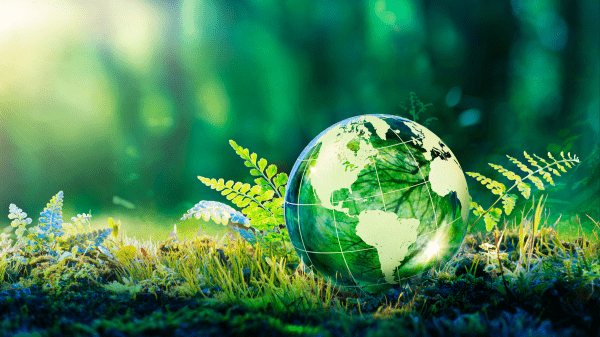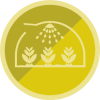Introspections on Interconnecting Active Global Citizenship, Democracy, and Environmental Education

Welcome to our EE and Civic Engagement mini-blog series! This series highlights key insights from a panel discussion hosted by Cornell University and the NAAEE ee360+ program in February 2025. Each post will feature one panelist, sharing their segment of the webinar along with a thoughtful essay that expands on their ideas.
This essay was written by Nathan Spees. Nathan Spees is the Global Education and Engagement Coordinator at WWF Austria, where he leads the development and implementation of WWF’s global education strategy, “Together for Action 2030.” With a background in Biology, Environmental Science, and English education, his career has focused on non-formal, outdoor, and experiential learning. Since joining WWF Austria in 2008, he has played a key role in youth empowerment, co-founding the “Generation Earth” leadership program and spearheading the EU project “Eat4Change” to engage young people in sustainable diets and climate action. He also co-chairs WWF’s Global Youth Task Force, advancing strategies for youth leadership and environmental engagement worldwide. Passionate about nature, he enjoys hiking, camping, skiing, and spending time by the river.
Practicing What We Preach: It Starts at the Very Beginning
I recall a workshop I held with a group of secondary school educators from across Central and Eastern Europe in 2009 that was part of WWF’s European Schools for a Living Planet program and focused on the topics of active citizenship, learner engagement, and democracy. I
remember their eagerness to learn new methods to bring environmental topics, democratic processes and engagement into the classrooms; however, they challenged me by stating, “our students don’t have any motivation to do anything” and “how can you get them to get active?” They rattled off a few examples of what they had tried (tree plantings, clean ups, recycling programs, etc.), and I then asked them, “when you work on these topics and projects, how many of these ideas came from the students themselves?” The room got quiet. I wondered with them out loud, “how can we expect them to learn democratic practices when we don’t offer them chances to participate in decision making?” Democracy is not a theory, but a practice, and it starts with how we show up and how we engage and involve learners in our programs.
Learning to Let Go
In my mid-twenties, I was living in Alaska and working for the US EPA and with Alaska Native communities on developing local environmental programs, and I quickly learned that coming in from the outside and trying to “fix their programs” had been an approach used for far too long and clearly wasn’t working. If anything was going to work, it was going to come from the community and needed to support their aims and goals. At the same time, I had a life changing experience when I was invited to meet young people from a brand-new youth organization called, “Alaska Youth for Environmental Action” (AYEA). It was not your typical youth environmental program, because the program was founded by a handful of youth and they led it: we supported them. I was asked to join as an adult coach, and I learned that counter to my environmental education training, that had taught me to:
- Set the learning objectives.
- Execute your program.
- Measure the learning.
That maybe we were getting it all wrong. Because with AYEA, the learners set the direction and we supported them in reaching their learning goals and aspirations to drive change from the local to national level.
Would it Work in Austria?
Life presents interesting twists and turns, and so in 2005, I suddenly found myself in the middle of Europe: needless to say, there were no Native Americans or Alaska Native tribes to work with, but there were youth! After a few years of trying to land a job back in the environmental field, I finally had the opportunity to meet and present an idea for a youth empowerment program to WWF Austria’s education team and director. I gave my presentation and pitch, “You’re missing a major opportunity and important target group (at the time, WWF Austria was only offering programs for children up to 14). Youth, or young adults, are an incredible group to work with!” They listened intently, but then the comments and questions came up. “We don’t work with them because we don’t know how.” “How do you get them to listen?” “How can you control such an unruly age group?” I responded, “now I know why you don’t work with them!” If we approach them with these expectations, there’s no doubt that you’ll run into trouble.
Creating the space for co-creation is critical. After getting the approval and some start-up funding from the government, we launched the program in 2010, with the request: “Are you between 14–18? Want to help create a new, WWF Youth Program? Join us.” Within a few weeks, we had a solid, small team of youth who were willing to volunteer their time to do just that. We gathered at the WWF training facility close to the Neusiedler See-Seewinkel National Park. Seven youth and 2 WWF staff, and together we developed the program. To provide some inspiration, I brought in stories and experiences from Alaska, which resonated with their values, goals and motivation. Together, we decided that the program would be formed around nature connection, self-discovery and development, a strong sense of community, self-driven and peer learning, involvement in creating the training topics, and action: an opportunity to plan and execute a youth-led action project. From then on, we started each new training group with a 5-day orientation program focused on getting to know each other, identifying personal strengths and areas for growth, and setting the learning topics for the program. The group then split into smaller planning teams - each responsible for preparing a 4-day long training weekend. It was like a “training in a training” where the learners became the facilitators and trainers themselves.
Action Projects Big and Small
From that very first year, I realized what a powerful ride it was going to be. The group of seven decided to take on the plastic bag issue and developed a multi-page action plan focusing on public awareness, engagement activities, political action, and more. It was admittedly overly ambitious but that too became a powerful lesson in itself. Over the lifetime of the project, which evolved into a 2-year project, they received over 10,000 Euros from the European Commission, performed street theater in multiple cities, gathered thousands of signatures for a plastic bag ban, partnered with other youth groups, and met with the president of the Austrian National Assembly. With that under their belt, they went on to Brussels to meet with the Minister of Environment and deliver their message. While they probably can’t take full credit, the EU eventually did pass restrictions on single-use plastic in 2021. To note, this was not the typical youth-led action project, as some projects were over in a day or a few weeks, but what is common is the ambition, motivation and drive that arises when you open the space to creativity, self-direction, and trust in their abilities. Of course, there is a healthy dose of skill and personal development training, coaching and mentoring: asking questions, challenging them at times, and being self-reflective and open for self-growth and development.
Getting Political
While it may not be for everyone, many youth do want to get politically active, but the disservice we do in the schools by making “the democratic process” so dry and unattainable, drives many away. In addition to the above examples for how to “democratize” our learning programs, we have the opportunity to elevate youth voices in decision-making processes. Whether it be opening the doors for youth to join in internal strategic planning processes, setting up youth advisory councils, creating youth seats on boards of directors, giving youth control over programs, or ensuring that youth have a voice in external processes, the options to elevate active citizenship are many. At WWF we have tried a number of ways to involve youth in decision-making processes, political campaigns, press conferences, and more. A good example comes from an EU-supported project called Eat4Change that ran from 2000-2024. The focus was on sustainable diets, climate and biodiversity protection, citizen engagement and youth. One of the highlights was the European Youth Summit in Brussels in 2021. Together, WWF staff from the European Policy Office and youth from across the continent and Latin America co-created the program and various political engagement activities, which included a Youth Position Paper on deforestation, setting up their own meetings with Parliamentarians, and organizing a street action, all of which can be seen in these 2 videos: Overview of the Summit and Youth Street Action. One of the memorable comments came from Mirjam, an Austrian youth participant, who stated, "I now know that my voice as a youth is valued, and that I can and should use it to drive change."
Starting Small, Going Big
Everyone starts somewhere. I’d like to share another inspiring story about a young Austrian woman named Julia. Around 2015, Julia signed up for the WWF Generation Earth “Action Leader Training.” At the time, she was quite shy, not super self-confident, but eager to be part of a community of active youth. Julia completed the 9-month empowerment training and organized an action project together with 2 other young women called “Biodiverse-City” where they toured around Vienna on bicycles and ran a number of outdoor workshops on urban biodiversity. Fast forward a few years, and Julia had returned as a “peer trainer” several times in our leadership program and had gotten deeper into the topic of biodiversity protection and eventually signed up for a global online advocacy training called “Standup4Nature” (2020) that we were running with Global Youth Biodiversity Network, the official youth voice in the UN negotiations. Upon completion, she and several other youth petitioned the Austrian government to include youth in the national commission that developed the national strategy. She went on to participate in the official UN meeting in Montreal in 2022, COP15, where the historic Global Biodiversity Framework was ratified. Julia remains an active member of Generation Earth and a well-respected young voice for biodiversity in Austria!
Opening and embedding democratic processes in our environmental education programs opens us up to a whole new world. It challenges our thinking and acting, and in my experience, leads to incredible growth for all involved and to real impact. If you would like to see and hear more about my own experience, feel free to view my TEDx talk from Sofia, Bulgaria which is titled, “To Be Seen and Heard.”



